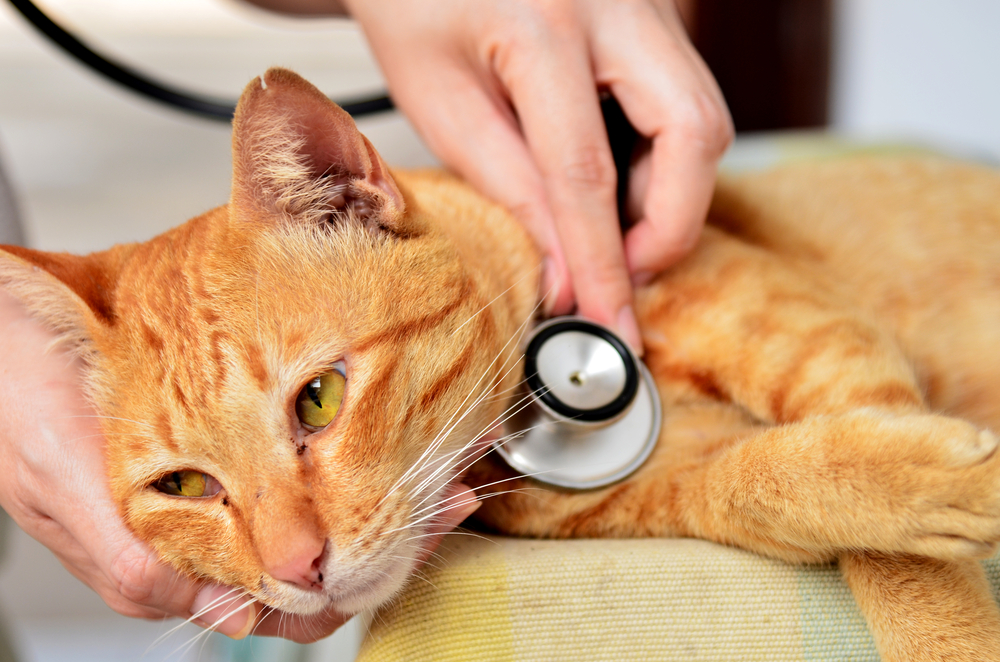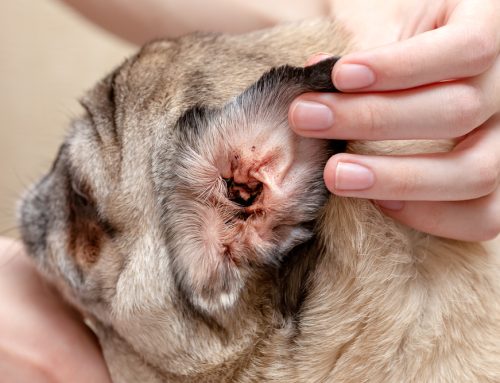As much as 10% of the pet population seen by veterinarians have some form of cardiovascular disease, making heart conditions relatively common in cats and dogs. Cardiovascular diseases can seldom be cured, and almost always become more serious unless the cause can be addressed and treated. Still, many pets diagnosed with heart conditions can live long, happy lives, so a heart disease diagnosis for your pet does not need to be too frightening.
Congenital heart diseases of pets
Some pets are born with heart defects they inherited through a fetal defect, particular bloodline, or overall breed disorder. In some cases, congenital heart diseases can be successfully treated with surgical repair, or managed with lifelong medication. Common inherited heart diseases in pets include:
- Hypertrophic cardiomyopathy — More than 85% of cats with heart disease have hypertrophic cardiomyopathy because of an inherited genetic defect that causes the left ventricle walls to become stiff and thick, leading to left atrium enlargement and potential heart failure. Affected cats may not show any signs, or may suddenly have difficulty breathing, or experience collapse, weakness, or hind limb paralysis.
- Patent ductus arteriosus — The ductus arteriosus is a blood vessel that allows oxygenated blood to bypass the nonfunctional lungs of an unborn pet. At birth, the pet’s first breath causes the lungs to inflate and the ductus to close, allowing the blood to flow to the lungs. If the ductus fails to close, the heart chambers enlarge and cause congestive heart failure in a left-to-right shunt. In severe cases, high blood pressure occurs in the pulmonary arteries, reversing the shunt’s blood flow, and causing a right-to-left shunt. Left-to-right shunts can be fixed through surgery, while right-to-left shunts have a poor prognosis.
- Pulmonic or aortic stenosis — In these conditions, blood flow can be obstructed when heart valves develop abnormally, or when blood vessels are constricted and obstructed. When blood flow is obstructed, the heart works harder to pump blood throughout the body, leading to thickened muscle and decreased oxygenation.
Acquired heart diseases of pets
Pets also can develop heart disease later in life. Common acquired heart diseases include:
- Heartworm disease — Caused when an infected mosquito bites, heartworm disease is a serious and potentially fatal condition. Easy to prevent, but difficult to treat, heartworm disease occurs when parasitic worms set up residence in your pet’s heart and lungs and the surrounding vessels.
- Degenerative valve disease — The most common heart disease in dogs, degenerative valve disease accounts for roughly 75% of cardiovascular disease, and is characterized by thickening of the heart valves, most commonly the mitral or tricuspid valve. Small-breed, older dogs appear most likely to develop degenerative valve disease. As the disease progresses, heart failure can develop.
- Dilated cardiomyopathy — This acquired disease causes progressive loss of the heart muscle’s ability to contract. As the heart muscle weakens, pressure exerted by blood travelling through the heart stretches the walls and enlarges the chambers.
Common signs of heart disease in pets

While the causes of heart diseases can vary widely, many cardiac condition signs are similar. Pets with heart disease may display any combination of the following signs:
- Coughing — Coughing that fails to resolve after a few days is one of the most common signs of heart disease in pets. When a pet enters congestive heart failure because of their heart disease, the engorged blood vessels leak fluid into the lungs, chest, and abdomen, and the additional fluid can create a cough. A cough can also be produced in heart disease patients if the heart becomes enlarged enough to press on the trachea.
- Exercise intolerance and fatigue — With heart disease, normal blood flow is typically impaired, meaning the body cannot receive the oxygen needed for exercise. In some cases, pets struggle to perform routine daily activities and can be severely fatigued.
- Behavior changes — When a pet with heart disease experiences abnormal blood flow and decreased oxygen supply, they may display unusual behaviors that can range from not eating and lethargy, to hiding and irritability. Your pet may also not want to participate in their favorite activities, preferring to conserve their energy.
- Fainting or collapse — Decreased blood flow to your pet’s organs also decreases vital nutrients, such as oxygen to the brain, and may cause your pet to collapse or faint. These fainting episodes are termed syncope when collapse is induced by lack of blood and oxygen supply to the brain.
Like other conditions, heart disease is best treated in its earliest stages. If you notice any signs that warn your pet may have a cardiac condition, contact our Countryside Veterinary Hospital team immediately to schedule an appointment.








Leave A Comment